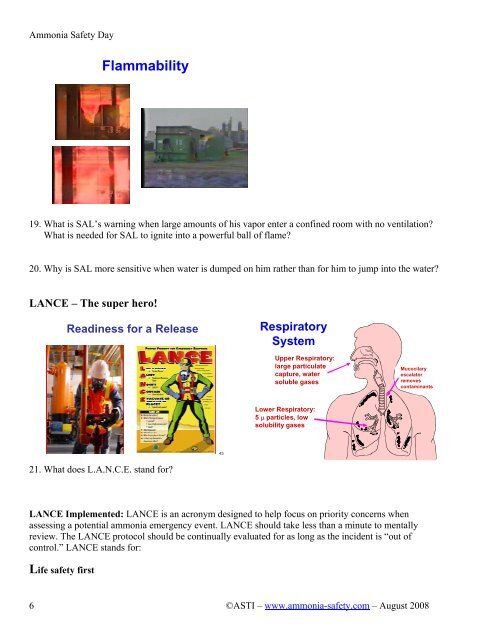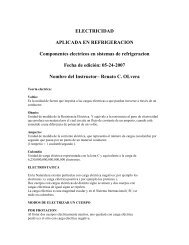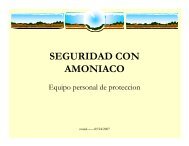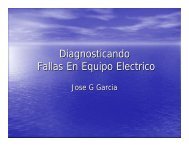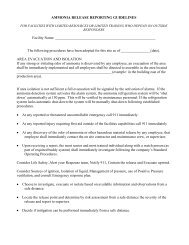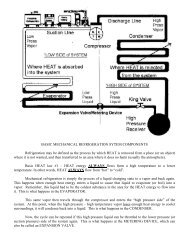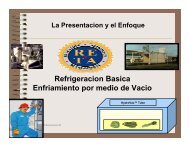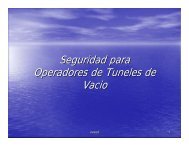Awareness Training Goals - Salinas Valley Ammonia Safety Day
Awareness Training Goals - Salinas Valley Ammonia Safety Day
Awareness Training Goals - Salinas Valley Ammonia Safety Day
You also want an ePaper? Increase the reach of your titles
YUMPU automatically turns print PDFs into web optimized ePapers that Google loves.
<strong>Ammonia</strong> <strong>Safety</strong> <strong>Day</strong><br />
6<br />
Flammability<br />
19. What is SAL’s warning when large amounts of his vapor enter a confined room with no ventilation?<br />
What is needed for SAL to ignite into a powerful ball of flame?<br />
20. Why is SAL more sensitive when water is dumped on him rather than for him to jump into the water?<br />
LANCE – The super hero!<br />
Readiness for a Release<br />
21. What does L.A.N.C.E. stand for?<br />
43<br />
Respiratory<br />
System<br />
Upper Respiratory:<br />
large particulate<br />
capture, water<br />
soluble gases<br />
Lower Respiratory:<br />
5 μ particles, low<br />
solubility gases<br />
Mucocilary<br />
escalator<br />
removes<br />
contaminants<br />
LANCE Implemented: LANCE is an acronym designed to help focus on priority concerns when<br />
assessing a potential ammonia emergency event. LANCE should take less than a minute to mentally<br />
review. The LANCE protocol should be continually evaluated for as long as the incident is “out of<br />
control.” LANCE stands for:<br />
Life safety first<br />
©ASTI – www.ammonia-safety.com – August 2008


